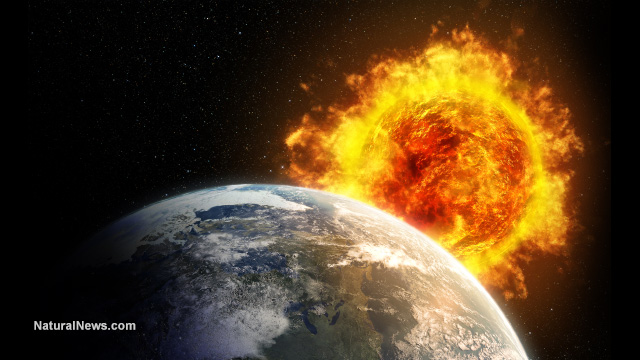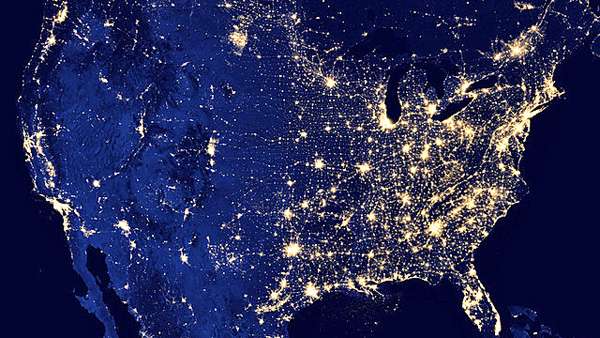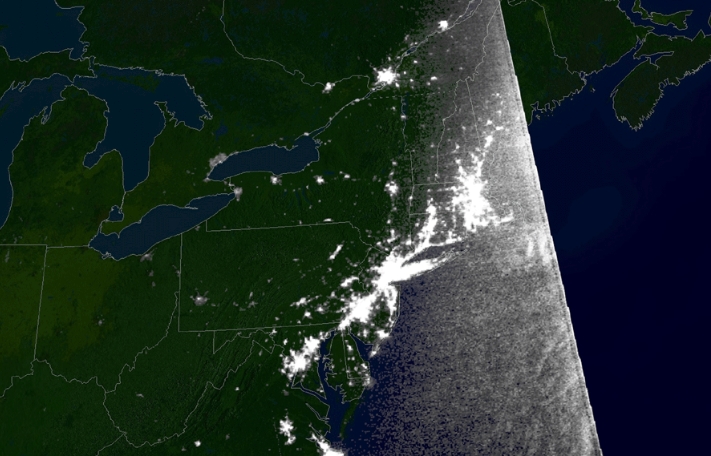Mars-sized sunspot is turning toward Earth, raising concerns over intense solar flares
08/12/2020 / By Virgilio Marin

A massive Earth-facing sunspot was detected earlier this August, raising concerns over the possibility of solar flares. Experts project that the sunspot, part of the cluster tagged as AR2770, is going to grow in size — its dark primary core is already estimated to be about the diameter of Mars.
Amateur astronomer Martin Wise of Trenton, Florida, captured an image of the sunspot using an eight-inch telescope with solar filters. He said the sunspot is trailed by several moon-sized “spotlets.”
Multiple minor flares have already been reported since it turned toward Earth, causing minor waves of ionization to ripple through Earth’s upper atmosphere. It hasn’t affected space weather yet in any major way, but increased activity is expected due to the sunspot’s increase in size.
Earlier in May, the National Aeronautics and Space Administration (NASA) detected a family of sunspots that emitted the biggest solar flare since October 2017. During this time, the sunspots were still not visible but were expected to rotate into view over the left limb of the Sun.
The flares were also still too weak for NOAA to release public alerts. However, NASA said that the sunspots potentially herald increased solar activity.
Sunspots could emit intense solar storms felt on Earth
Sunspots are darker, cooler areas in the sun that are located in the region called the photosphere. The photosphere has a temperature of more than 5,500 degrees Celsius, while sunspots have a temperature of more than 3,500 degrees.
Sunspots are believed to be caused by interactions with the Sun’s magnetic field. They occur over intense regions of magnetic activity that can release great amounts of energy. When that happens, solar flares and big storms called coronal mass ejections erupt from sunspots.
Solar flares are huge explosions in the sun that can release great levels of radiation into space, which can interrupt radio communications on Earth. Meanwhile, coronal mass ejections are enormous bubbles of radiation and solar particles that often accompany solar flares. They explode into space at high speeds when the magnetic field lines suddenly reorganize.
Charged particles from coronal mass ejections can reach Earth and trigger noticeable lights in the sky called Aurora. Stronger explosions, however, can disrupt electricity grids which can cause a power outage.
“Strong solar storms can cause fluctuations of electrical currents in space and energize electrons and protons trapped in Earth’s varying magnetic field. These disturbances can cause problems with radio communications, Global Positioning Systems (GPS), power grids, and satellites,” wrote the National Oceanic and Atmospheric Administration (NOAA) on their website. (Related: Space weather radar system to be operational by 2021 hopes to provide advanced warning of power grid-killing CME solar flare.)
Sunspots not a cause for panic
Despite the increased solar activity of cluster AR2770, experts said that nothing catastrophic is on the horizon.
According to Dibyendu Nandi, a solar astrophysicist at the Center of Excellence in Space Sciences India, a killer flare that could interfere in GPS navigation and shut down power grids happens around once every century. A storm of this magnitude last occurred in 1859 and, to a lesser degree, in 1989.
Nandi also said that more sunspots are to be expected as the Sun enters the next solar cycle, which occurs when the Sun’s north and south magnetic fields switch places. The beginning of a new solar cycle is marked by the solar minimum — a period in which the magnetic field is at its weakest.
“Solar cycle 25 is just beginning and new sunspots are starting to appear more frequently on the Sun. However, we don’t anticipate any ‘killer’ solar storm from a gigantic sunspot coming anytime soon,” said Nandi.
Cosmic.news has more on current phenomena occurring in space.
Sources include:
Tagged Under: cosmic, discovery, natural disaster, Power Outage, radiation, solar cycle, solar flare, solar storms, Space, space weather, sunspot, the sun
RECENT NEWS & ARTICLES
PowerGrid.News is a fact-based public education website published by Power Grid News Features, LLC.
All content copyright © 2018 by Power Grid News Features, LLC.
Contact Us with Tips or Corrections
All trademarks, registered trademarks and servicemarks mentioned on this site are the property of their respective owners.




















